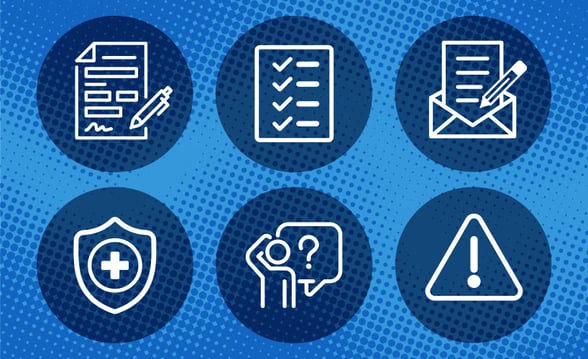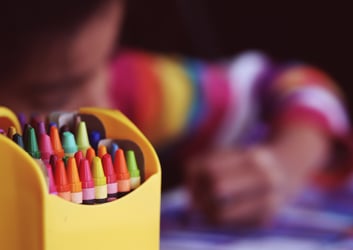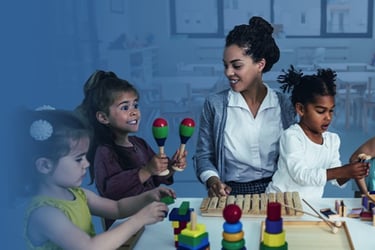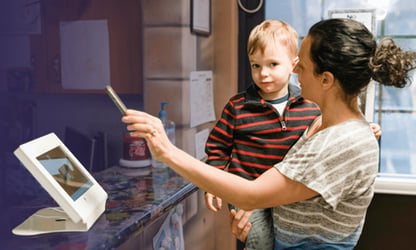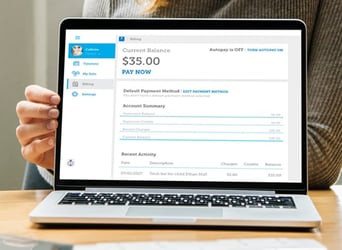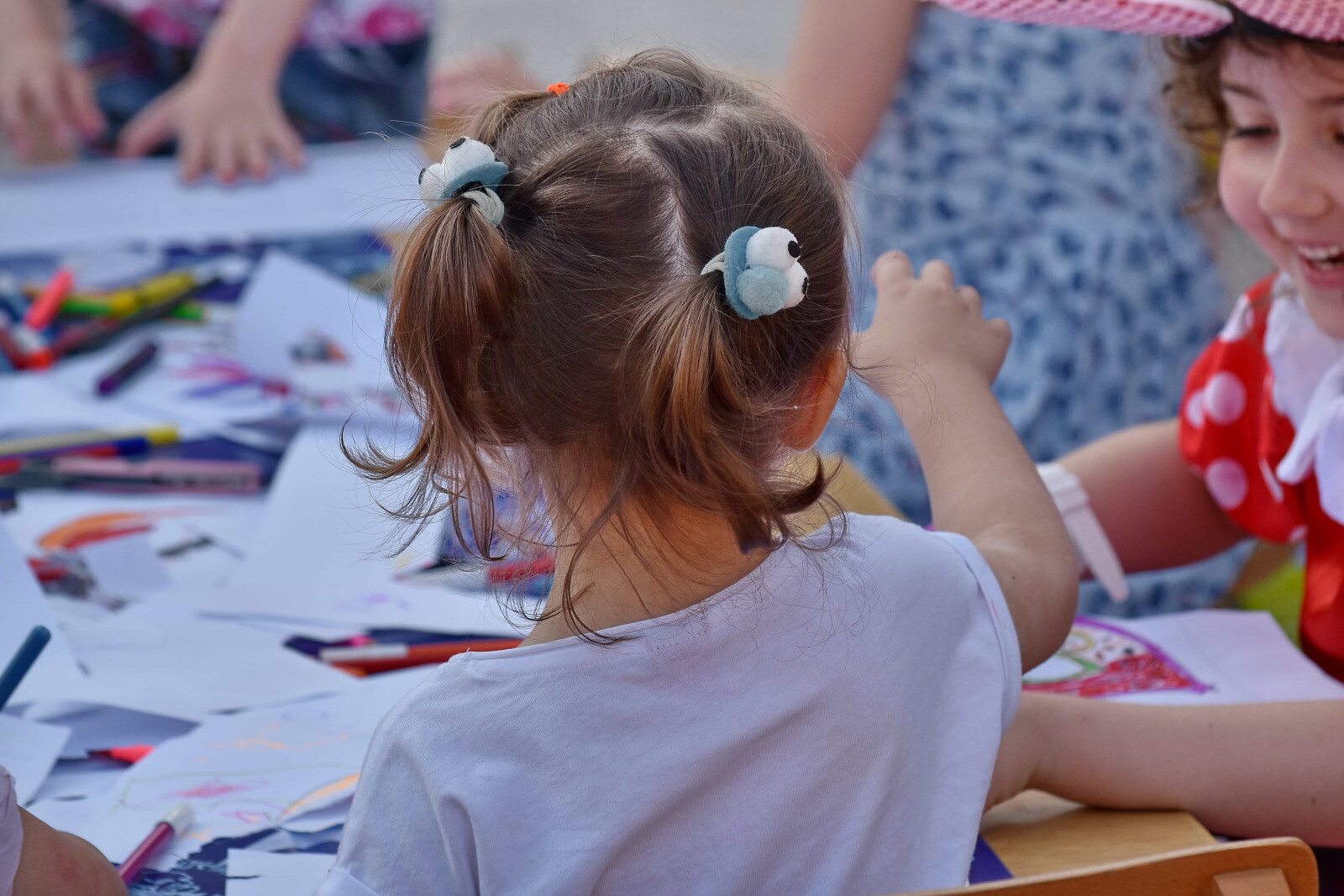
Teaching preschool children presents a unique set of challenges and preschool classroom management is an important way to provide an engaging and positive experience for young children. For children who are in school for the first time, teachers must use a wide range of effective teaching strategies for young children and understand how classroom organization for early learners plays into the school day.
This guide provides 16 useful classroom management tips to help preschool teachers provide an enriching and safe classroom for children, timely and informative communications for parents, and vital support and tools for teachers and staff. Keep reading to learn how you can create the best learning environment for all your students.
Table of Contents
- Create a Positive Learning Environment
- Structure the Classroom for Success
- Use Engagement and Interaction Techniques
- Explore Behavior Management Strategies
- Develop Routines and Responsibilities
- Adapt to Individual Needs
- Ask for Feedback for Continuous Improvement
- Set Rules and Expectations
- Ensure Engagement and Active Learning
- Leverage Communication and Language
- Encourage Social and Emotional Learning
- Involve Parents and Stress Communication
- Build Professional Collaboration and Support Networks
- Access Free Tools and Templates to Simplify Classroom Management
- Emphasize Cultural Competence and Inclusivity
- Use Technology and Resources
1. Create a Positive Learning Environment
The most important part of good classroom management for preschool is creating a positive learning environment. Your class should be a safe and well-organized space for students to learn.
It can be hard to achieve a "safe and well-organized" space if students are misbehaving. Positive reinforcement is a vital part of preschool classroom management − it rewards and encourages good habits.
Positive reinforcement in education is the correlation between doing the right thing and seeing those actions rewarded. For example, you can have a sticker chart and award one each time a student displays good behavior. You can give students prizes when they earn enough stickers. The kids will learn that if they display proper classroom behavior, they'll earn rewards.
However, you must remember to set clear expectations and model good behavior. "Do well in class" may be a broad statement for young children to understand.
It's best to communicate what you want clearly and pair this expectation with an explanation. Kids are curious and ask "why" a lot. Answering helps them understand why the rules are necessary.
Tell the student, "I expect you to put away the toys so they're safe for the next time you want to play." You've communicated what you want and why your student should do it.
It's not enough to tell children to do something. Encourage good habits by doing the right thing yourself. If you take something from its designated spot, put it back where it was.
If children see you doing this enough, they'll learn it's the right thing to do. People generally pick up habits and behaviors from mimicking others.
2. Structure the Classroom for Success
The average preschool classroom can get chaotic, so it's helpful to learn proper preschool classroom management and organization for early learners. Separating noisy and quiet activities keeps disruptions and distractions to a minimum.
Kids playing with Legos should be on the other side of the room, away from the reading area. Many toddlers aren't adept at filtering out noise like adults. We all have two types of attention: reactive and focused.
- Reactive attention is intuitive and alerts us to moving or unexpected objects. We learn and develop focused attention over time.
- It's easier for children to learn focused attention if you separate your room into quadrants. A divided room allows them to concentrate on their tasks.
Clear and concise labels aid classroom management for preschool because they help children find designated areas. For example, labeling the art area as "Art" alongside an image of crayons will tell children where to go.
Many preschool kids may not have enough reading skills to identify the words at first. The picture will help children locate where they can do arts and crafts.
The labels should be bold and brightly colored. You can use them in storage areas, bins, and other containers to help children find and store objects. It's also advisable to post a visual schedule.
Schedules help kids understand what adults expect and when they're supposed to do it. Create a schedule with easily identifiable images to associate with the activity.
You can represent lunch with an apple and reading time with a book. Consider drawing a clock with the proper time; lunch is at noon, recess is at 12:30, etc.
With enough practice, the children will learn and adhere to the schedule alone or with minimal assistance.
3. Use Engagement and Interaction Techniques
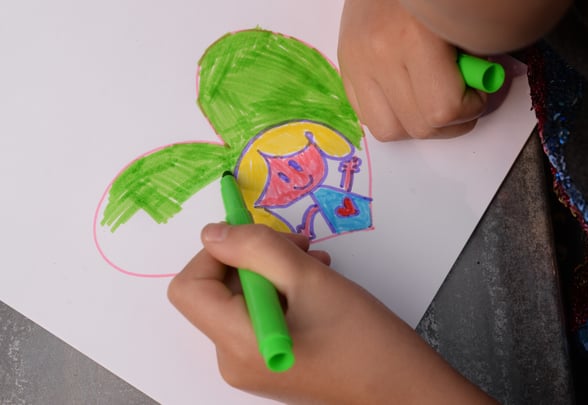
Hands-on learning helps children practice motor function and brush up on recently learned skills. Engaging preschool activities help kids stay focus and avoid becoming too frustrated with classroom monotony.
Interactive activities help children learn more about the world and make abstract ideas concrete. Physical and engaging activities often use multiple senses for proper completion.
Interacting with objects helps toddlers understand the concept behind them. They often learn to count from memory but don't understand what "five" or "ten" is.
Giving a preschooler five bean bags tangibly communicates what the number five is. Hands-on learning allows kids to make mistakes in a safe setting.
The idea is the same as learning to drive. You practice with your parents or in a class, so mistakes aren't as costly or dangerous.
Keep interactive learning centers simple but immersive. The reading area only needs comfortable seating and picture books. Picture books help kids visualize words and concepts.
Sand and water tables encourage sensory play and scientific interest. Block-building promotes imagination, spatial reasoning and math skills.
It's vital to remember that exercise and outdoor play are legitimate educational tools. Obstacle courses help children sharpen coordination and stay healthy.
Physical games like Simon Says help kids learn to follow and give directions. They gain body awareness and sharpen their balance.
Group projects and touch screen activities teach preschoolers cooperation and engage them in the learning process. Both limit disruptions because they're immersive and reduce distractions.
4. Explore Behavior Management Strategies
Something to remember when planning preschool classroom management strategies for preschool is that a two-year-old's brain can't regulate behavior like an adult's.
Toddlers understand empathy, but it's underdeveloped compared to older people. The lack of mature empathy and emotional regulation in young children means that when toddlers are upset or afraid, they act out.
Respect that your students are upset and that they can't express that exactly like you. Designating a "calm-down" area is a helpful preschool classroom management method.
The calming space can help them process their emotions until they're ready to rejoin the group. Hugs can help connect with misbehaving students, but whether you should do this depends on your situation.
Some establishments discourage hugs for liability reasons. Some children don't like the idea of physical contact. Make sure hugging is okay with your school, the parents and the child in question.
Playtime is a fantastic way for kids to process their emotions. Toddlers have a lot of energy so you can channel misbehavior or disruptive behavior into physicality.
Let them toss balls outside or bean bags into a bucket. Compete (but don't win) and admire their skills to channel energy into laughter and confidence.
Emotion-coaching is an effective tool for conflict resolution for preschoolers. Kids sometimes fight with you or each other when they're cranky or moody.
Actively identify moodiness, crankiness and defiance to address the issue. The idea is to defuse a tense situation by gently setting boundaries. You should encourage the child to communicate their issues as well as possible.
You could say, "You're upset, but don't hit Tim. Hitting is bad and hurts." Establish that you understand they're unhappy but that misbehavior isn't the answer.
Be compassionate and look them in the eye while you talk. They may get angry, but if you stay calm and maintain a safe environment, they'll become relaxed and less defiant.
5. Develop Routines and Responsibilities
Adults and children like routines because it makes them feel comfortable in times of uncertainty. Part of why school cancellations during the pandemic were upsetting to children is because it ruined their routines.
Children feel more confident when they have familiar and predictable activities. Schedules in child-centered learning environments help kids feel more independent and in control of their surroundings.
They also provide a sense of engagement. Kids learn better when they know why they're doing a certain task and the time it's supposed to happen. Schedules also:
- Tell preschoolers what's currently happening and what comes next
- Create a sense of safety and security
- Help build bonds and self-confidence
- Children may look forward to interacting with people they share similar activities with
- Self-confidence comes from consistent practice at a particular skill
- Teach time management
- Kids begin to comprehend time and learn how to manage it for given assignments
Inclusive classroom strategies include assigning students tasks so they feel helpful. Scheduling jobs introduces responsibility to preschoolers and familiarizes them with given tasks through repeated exposure.
Certain jobs can include class librarians, door holders, hall monitors and cleanup monitors. Create a job chart to simplify preschool classroom management. The chart will help you and the students remember who does what assignments and when. Make sure to rotate each role among the students. Everyone should get a fair shot at each job for fairness.
6. Adapt to Individual Needs
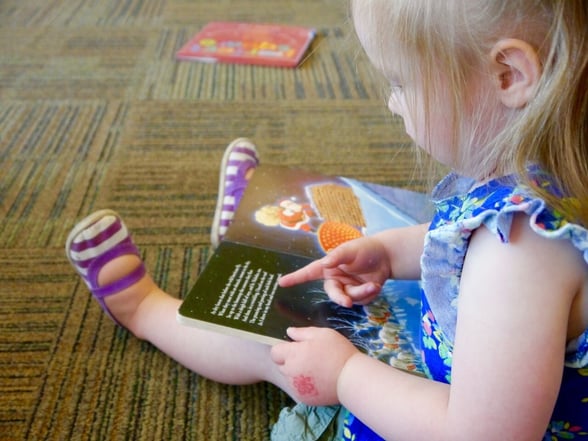
Proper classroom management strategies for preschool should accommodate each child's specific needs and personalities. No two children learn the same way.
Lesson plans must consider various learning styles so everyone feels included and has a fair chance to learn the material. Simply telling the children what they should do won't engage everyone.
Many kids will become bored and disruptive or fail to absorb the lesson. If you're teaching shapes and colors, don't just tell your students what a triangle or orange are. Use visual aids like pictures of shapes or bring an orange to class to demonstrate the color. There are three distinct learning styles preschoolers usually prefer:
- Visual: Kids prefer visual aids
- Auditory: Students listen to directions or hear the lesson
- Kinesthetic: Involves physicality, like touching and feeling
You may want to find a way to combine all three, so all types of learners are engaged at once. Lesson scaffolding is an effective teaching strategy for young children. It’s when you break lessons down into more easily manageable pieces with accompanying tools. You build one level of education until the student can move on.
The instructor makes suggestions and gives prompts and tasks just above students' abilities so they can find the answers. Encouraging students to think fosters individualized learning.
Another way to individualize lessons for each student is to include problem-solving. Everyone won't find answers the same way. Create problem-based scenarios so each child can explore solutions.
7. Ask for Feedback for Continuous Improvement
Your classroom management plan for preschool won't be perfect. Odds are, there will be a few students who won't enjoy how things are done. The worst mistake you can make is disregarding their feelings.
While you are the adult in charge, the children will often have valuable and useful opinions. Don't assume that because you're the teacher, you're immune to mistakes. Always ask, "Is there something I can do better?"
Talk to your students about your preschool classroom management plans. Ask what they enjoy or dislike about the class lessons or environment and if they're ok with the schedules and activities.
Remember that this is classroom management for preschool. Their lessons should have some basis around what they want to do and are good at. Learning what everyone prefers or doesn't like can increase engagement.
Feedback can help with scheduling issues too. Let's say that some of your students say that reading time is too long. Designating less time to read can keep kids from getting bored and annoyed.
8. Set Rules and Expectations
Earlier, we mentioned that it's vital to clearly communicate what you want children to do. They haven't developed the mental flexibility to understand vague commands like "stay safe" and "do well." Those terms don't have enough instruction to inform preschool-age kids what's expected of them or how to carry out the task. Clearly and simply explain what you want.
Short rules work best for preschool behavior guidance. "Don't be late for class" or "Be respectful to others," are quick and to the point. You must enforce the rules and expectations kindly and consistently.
However, don't talk at your preschoolers, speak to them. Involving your students in the decision-making process makes them feel heard and likelier to follow the classroom rules.
There may be certain activities your class wants that you'll have to deny. Make sure you explain why you can’t do them. Children are curious and can understand concepts if you take the time to explain.
You risk alienating them if you treat their concerns and questions as irrelevant. Ensure they understand why the rules and expectations exist and the difference between the two.
- Rules are what children should and should not do while at school.
- Expectations are classroom norms set in a positive light. "We're courteous to everyone while in class," is an expectation.
Ensure the kids understand the consequences of not following class rules. It's a good idea to opt for "positive" rules too.
Avoid the words "no" and "never" if possible. Instead of "No running," try "Walk carefully in the class and building." Properly setting rules and expectations is a method for building social skills in early childhood.
Your classroom is a microcosm of what they can expect in the real world as they get older. You are one of the first people to teach them what they are and are not allowed to do.
9. Ensure Engagement and Active Learning
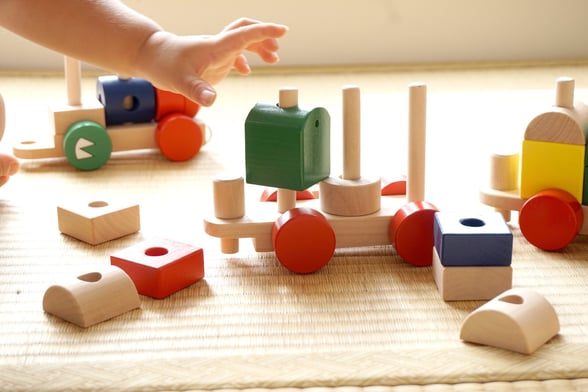
We've mentioned engagement throughout this guide, but what exactly is it? Mistaking engagement for learning hinders preschool classroom management. You must understand and use both to teach young children.
- Learning is when people process and use information. Engagement is when people pay attention to and are motivated to learn.
- Engagement involves time management, discipline and a person's feelings toward learning. Adults have an easier time absorbing information even when they're disinterested and flat-out bored with a subject.
Active learning is when a teacher asks students to engage with the assignment. You're asking that they become part of the lesson instead of passively learning − or just take instruction from an expert.
A lot of active learning for preschoolers involves sensory activities and movement. You're developing their educational skills alongside basic motor functions and senses.
Craft activities, like cutting paper shapes, can help children learn to grasp and hold items. Making bead bracelets helps kids create and identify patterns or classify them according to weight, shape, size and color.
Role-play activities allow kids to imitate specific movements and develop empathy alongside other social interactive skills. Role-play games also sharpen kids' imaginative and storytelling skills.
More developmentally appropriate practices include allowing children to choose activities and free play. Giving kids freedom of choice makes it easier for you and the kids to learn their preferences and encourages involvement.
10. Leverage Communication and Language
Your language matters when creating classroom management strategies for preschool. We discussed "positive rule enforcement" earlier, where you create positive rules to govern your class.
Using positive language matters because it doesn't focus on what the child should do or how they may fail. It concentrates on what your preschoolers should do to achieve results.
A teacher's train of thought should be less, "Sit down, or you'll be punished," and more "Stay seated unless you have permission to stand." Of course, how you communicate this matters as much as the words you use.
- Active listening can help you determine why a kid does a particular thing. Use encouraging smiles and nodding to show you care about what they're saying. Get down to their level and make eye contact to make them feel safer and their concerns feel validated. Ask questions to show you're listening and to help improve the child's communication skills.
- Reflective listening is another way to show you're willing to hear what your preschoolers have to say. It's a preschool classroom management technique where you repeat them with slightly different words. They'll feel that you're not there to judge and want to hear them out. Once the child has said their piece, you can correct their behavior.
Communication also helps you make arrangements for extenuating circumstances − with the parent's input, of course.
Whenever you talk with children, be sure to speak clearly and don't offer bribes for basic behavior.
Offering rewards for short-term control doesn't set proper boundaries. It may set the expectation that a child should be rewarded for basic good behavior (like learning not to hit others).
11. Encourage Social and Emotional Learning
Social and emotional learning (or SEL) is when students gain and learn to apply skills, knowledge and attitudes to develop healthy identities and emotional management.
Put more simply, SEL is when preschoolers learn social skills and emotional regulation, and where kids acquire cooperative skills, strengthen their empathy and make responsible and caring decisions.
Schedule-making helps kids increase their sequential reasoning and bond with others. They learn the order in which to do actions that benefit themselves (and others) and to feel comfortable in groups.
When people continuously work with others, they learn better self-regulation. Children learn to monitor their behaviors, feelings and thoughts to accommodate others and to better the group.
Here are a few other ways to incorporate SEL into classroom environments:
- Create a clear and child-friendly list of class rules and expectations.
- Give every child an opportunity to contribute to the class routine and maintenance.
- Consider assigning cleanup or monitor duties to children.
- Positively acknowledge each child's strengths.
- Celebrate holiday and family customs while respecting others'.
- Participate in community events so kids can see they matter and can make a difference.
- For example, recycling is a good way to encourage community participation
Conflict is inevitable, but you can guide children through disputes with positive reinforcement and consequences for breaking rules. Do not make these interactions transactional, that is,
don't offer rewards for common etiquette. Instead, focus on how important it is to treat others and themselves respectfully; emphasize empathy. With time, they'll come to learn tolerance and social norms.
12. Involve Parents and Stress Communication
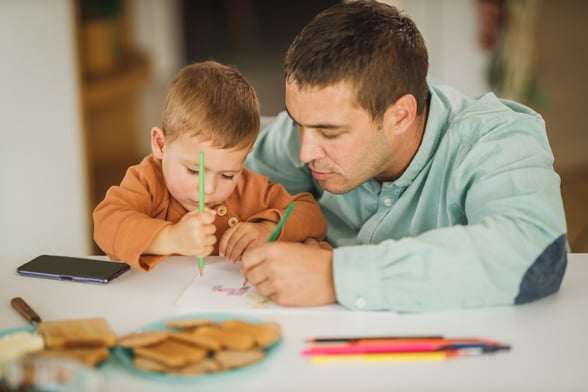
Classroom management for preschool isn't just making plans for teaching students. You also need to communicate with and involve their parents.
Involving parents does more than foster a better working relationship. It creates a team that may make preschool classroom management easier.
Having someone at home and school working on the same page can improve a toddler's educational, social and emotional growth. Unfortunately, there are many barriers preventing communication:
- Work interferes with meetings and phone conferences
- Travel to facilities is hampered by lack of transportation
- There may be a language barrier between parents and teachers
- Some parents actively avoid messages if there are too many, and some parents also avoid "bad news," such as if their kid misbehaves in class
- Notes may get lost if there are many people involved in pick-up − grandparents or older siblings may sometimes pick a child up from school
Surveys can help improve parent-teacher communication in preschool. They're a quick way to share information and get opinions about classroom procedures.
Keeping FAQ copies handy is another way to encourage engagement. It keeps you from answering questions repeatedly from multiple parents. It's important to ask how caregivers want information relayed to them.
Some people would prefer an email over a phone call or vice versa. Others prefer periodic updates over constant notifications. Too much communication can become overwhelming.
Find out what languages the family speaks at home. Translations go a long way toward simplifying communication and making everyone in a multilingual home feel included.
Communicate respectfully and without judgment. This helps parents stay open and willing to continue working with you in the future. Build trust with families and share good news whenever possible.
Cultivate a professional but friendly atmosphere. Treat students and parents courteously and always praise good behaviors and academic achievements.
13. Build Professional Collaboration and Support Networks
Relationships with students and parents can make your job easier. But classroom management strategies for preschool teachers require you to get to know your fellow educators too.
Your job may go more smoothly when you develop relationships with your coworkers. If everyone gets along, there are less disruptions and tension at work.
Communication and cooperation foster a safe environment for teachers, which makes students feel safe. Children can pick up on negative feelings and may become put off and distracted by them.
Teachers can support each other during tough times. Networking in professional learning communities creates relationships and can net valuable contacts.
Respectful collaboration helps you make friends. Some of your fellow educators may be willing to share and discuss their classroom management ideas for preschool.
14. Access Free Tools and Templates to Simplify Classroom Management
One crucial childhood early childhood education practice you may not have thought of is keeping templates. Vanco has over 70 free templates for you because we know preschool education can be difficult. If you can reasonably cut corners, do it. Keeping templates on hand improves preschool classroom management.
Having multiple questionnaires, daily report sheets, welcome letters and forms to administer medicine expedites certain processes. Templates are flexible. They operate on a “one-size-fits-all” basis.
Multiple teachers can share this welcome letter template. All each instructor has to do is change the information regarding who they're speaking to and the subjects they teach.
Using templates reduces your workload and lets you focus on more important tasks. Parents won't have to wait for you to create and print permission slips if you've got templates.
A template takes less time from your classroom management for preschool. You can dedicate more effort to other areas of your teaching experience.
Templates promote consistency and uniformity. It's easier for teachers, parents and students to discuss what's on the forms among each other if they all look and read the same.
15. Emphasize Cultural Competence and Inclusivity
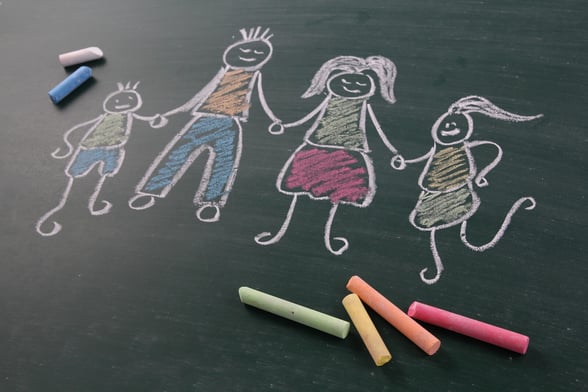
Culturally responsive teaching (CRT) in early childhood education means incorporating and validating various cultures within classroom settings. Many teachers will tell you that CRT is best incorporated into SEL.
It makes sense to combine these classroom management strategies for preschool. SEL is teaching young children how to manage emotions and interpersonal skills. Learning about other people's experiences and cultures helps bridge social gaps, for example, by celebrating each other’s holidays and family customs.
This is a good start, but limiting cultural cross-interactions to certain days may not make other experiences and beliefs more accessible. It may help to make CRT part of multiple subjects.
Choose literacy content − books and software − that demonstrates students' cultures, backgrounds and environments. Let students try pronouncing words in bilingual books. You'll show native speakers you care, and the other kids can expand their vocabulary. Ask engaging questions while using culturally responsive materials.
You can start conversations to make them think about and explore differences among ethnicities, genders and society as a whole. Be creative with other teaching aids like music.
- Music is often an expression of one's surroundings. Try playing different genres like rap or K-pop to explore community differences.
- Consider using multilingual labels for designated areas or storage spaces.
- Reach out to the students and families. We mentioned that language barriers can cause issues when communicating with parents and guardians. It can help a lot to learn some of the family's preferred language.
You and the parents can better understand how to help children learn and grow socially. Perhaps the best way to teach CRT is by educating yourself about other cultures.
- Familiarize yourself with social issues and research cultural intricacies.
- There are various books, podcasts, research papers and articles you can explore to support CRT and preschool classroom management.
16. Use Technology and Resources
There is an argument to be made that schools have become over-reliant on technology after COVID. Virtual classrooms may have hampered educational efforts for some, but technology still has its place in class.
- Preschool educational technology can be as simple as a few videos scattered throughout your lesson plan. Video learning introduces young kids to online information gathering and they get to absorb information in a new way.
- Teachers can incorporate educational apps to further engage students. Kahoot! Kids is a free app that offers prebuilt quizzes you can add to your lesson plan or that kids can complete at home.
- There are also online resources for teachers to continue their professional development. TeachThought is a blog with a variety of articles about critical thinking, teaching, learning, and the future of teaching.
- Free Technology for Teachers is a blog about how to use technology in the classroom. Technology can keep track of lessons and streamline class operations too.
Vanco Smartcare is one type of class operations software.
- It makes creating and sharing lesson plans easier for teachers and administrators. Teachers can log attendance, meal counts, absence reminders and incident logs.
- Smartcare makes communication with parents easier. Instead of face-to-face or phone conferences, you and the families can use two-way chat.
- You can also share daily reports and send rapid notifications and announcements.
- Smartcare even allows you to share photos.
Get 100+ Editable and Printable Templates for Almost Every Preschool Situation
We know preschools like yours are busy. That's why we made dozens of templates to help you manage the various aspects of your organization. With billing and invoicing, activity templates, forms and even marketing materials, we have it all. Download all 100 today!



